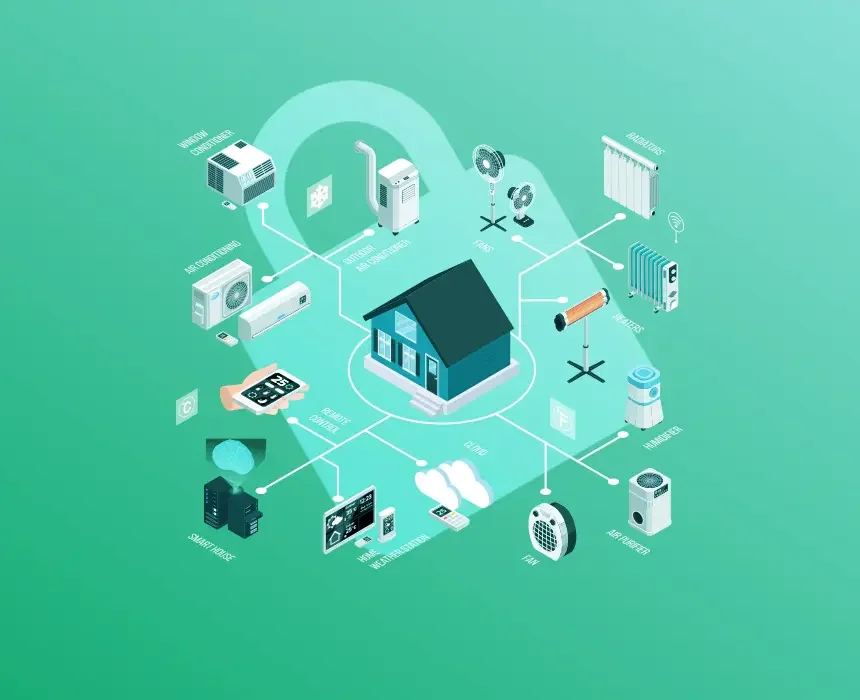
A router is perhaps the most important gadget in any modern-day home. It controls access to your home Wi-Fi network that is used by all Wi-Fi-enabled devices such as mobile phones, laptops, and smart internet of things (IoT) devices. Once your Wi-Fi network gets extended beyond your walls, it opens a wide world of opportunities to hackers who can manipulate it for their benefit. They can sneak and gain access to the devices connected to the network. A majority of us ignore the safety of the routers once it is installed and connected to our devices. All we do in most cases is set up a password to prevent others from accessing the data. But it needs more attention. You can avoid most of the potential attacks with a few best practices detailed below.
Conventional routers come with a default username and password. Most of us hesitate to change it for the benefit of convenience. But this can potentially land you in trouble. So always change the name of your home network or SSID. There are chances when your visitors, guests, or an immediate neighbor seeks the credentials of your network. So it is advisable to change your default simple password to a complicated one that makes it hard for others to remember and share your password. Another step you can implement is to limit the access of Wi-Fi to required persons alone. It doesn’t matter if you put in a complex password. Once this is exposed, it can risk your network and its security. So it’s a best practice to change your Wi-Fi password frequently.
Changing the default IP address and admin credentials of your wireless router is worth considering to secure your home network. This will prevent hackers from accessing it. Anyone connected to your network can guess or obtain your default admin credentials as they are available on Google. Once someone gains access to your admin console they can control your network. You can change the IP address and admin credentials from the admin console of your router. After changing the IP address, you will have to type the new IP address on the browser to gain access to the console.
The firmware plays a key role in ensuring your network security. The router manufacturers automatically update the firmware. However, it is recommended to schedule a regular check for updates. Check the router manufacturer’s website and install the available updates. Usually, a firmware update follows a major security weakness. In such cases, the router manufacturer will issue security patches to fix it. So new vulnerability stories from your router manufacturer can help you to stay updated about the latest patches.
The smart devices in our homes have the Universal Plug n Play (UPnP) methodology to discover the available network and connect with its manufacturers for firmware updates. But the UPnP is a potential entry point for hackers. They can use it to inject malware programs to get access to your router’s security settings. Wi-Fi Protected Setup (WPS) is another feature that will let you connect new devices with a push button or a PIN code. Your router’s WPS button will send out signals that will add a device to the network. This makes it easier for unauthorized devices to gain access to the network. Disable this feature if you specifically want to disable it.
If your router has a guest network feature, leverage it to grant access to your guests and others who need to access your Wi-Fi network. This will protect your Wi-Fi network from unauthorized access. Another option is to hide your network. Your router need not have to broadcast its SSID. Once you block the router from sending the identifier, this will hide your network. The devices that are already connected will stay connected to the network and the network list visible to others will display it as Hidden Network. This will make it impossible to add their devices to your network as they don’t know the name. You can turn on the SSID broadcast to make it visible to your new devices. After connecting the new device, you can turn it off. Network hiding can help you from guests or third parties who request your home network’s password.
Hacker tools attack weakly encrypted networks easily. There are three types of protection systems that are used to secure transmissions - Wired Equivalent Privacy (WEP), Wi-Fi Protected Access (WPA), and Wi-Fi Protected Access 2 (WPA2). It is recommended to use WPA2 or its strengthened versions of WPA2 AES, which is much more difficult to exploit. A few older routers have only WEP protection. But it can’t safeguard you from a few common hacking programs.
A virtual private network (VPN) encrypts your internet traffic and prevents unauthorized access to your network. Once installed on a router, your IP address will get replaced with the VPN IP address, thus making it appear as using your device from a different location where your VPN server is located. Setting up your Router with a VPN helps encrypt all the data transferred from every device connected to your router. So you need not install the VPN individually on each of your devices. This even covers Wi-Fi-enabled devices like home media systems that don’t support VPN. Being an easy-to-setup VPN solution, UTunnel VPN fits the bill, for setting up your own personal VPN server for your home network.
Your Wi-Fi router might have an inbuilt firewall. You can browse through the console settings to enable it and add an additional layer of security to your devices. If your router doesn’t have one, install a third-party firewall to prevent hacking attempts on your network. UTunnel VPN also comes with an inbuilt firewall that could block malicious websites and help you stay protected.
A majority of the routers that hit the markets come with excellent security features. So it is the devices that are connected to the router which pose threats to the security of your network. These connected devices can provide an entry point to your routers and enable unauthorized access to your network as well as other devices. So always confirm that every software, add-on, or browser extension installed on your devices are safe and secure. Password-lock every possible device you own from your smartphone to the IoT-connected smart devices to prevent security compromises. You can turn off the router when it is not in use for a longer period of time.
The way you select to ensure your network security doesn’t matter. It could range from a simple password change to installing a firewall or a VPN on your router and other connected devices. But make sure that it protects your network from falling prey to the wrong hands of hackers. The above tips can definitely minimize the risks of your Wi-Fi device from joining the rally of malicious networks. These are also the easiest methods to keep your network safe from the prying eyes of cyber attackers.
If you are looking for a VPN solution to protect your home network, UTunnel fits the bill. We provide one of the easiest VPN deployment options in the market to set up a dedicated VPN server for your home, personal, or business use.
An excerpt of this article on how to protect your privacy online can be seen on Porch.com.

In the rapidly evolving digital world, businesses are increasingly transitioning their data and applications to the cloud. However, with this move comes the heightened risk of cybersecurity threats, …
27 July 2023
The COVID-19 pandemic has compelled businesses to adapt their traditional practices and adopt work-from-home as a new standard. That increased the need for business VPN solutions, to provi…
11 November 2022
In an increasingly interconnected world, the ability to securely access remote systems and devices has become an integral part of modern business operations. As organizations expand their digital foo…
31 August 2023
With the ever-increasing rise in cyberattacks across the globe, cybersecurity has now become a serious concern for businesses of all sizes. Cisco's latest survey, "Big Security in a Small Bu…
04 November 2020